Pension and Lump Sum Benefits
How much pension will I receive?
When you retire you will receive an annual pension and where applicable a one-off cash Lump Sum. Under current tax rules, for most people the one-off cash Lump Sum can be paid tax-free (but this will depend on your personal circumstances). The Plan will add together the benefits you have built up on a CARE and Final Salary basis. Your pension is paid monthly at the end of each calendar month and is paid for the rest of your life. How each benefit is calculated is detailed below.
Career Average Revalued Earnings (CARE)
From 1 April 2024, you build up benefits on a CARE basis. This means that you build up your retirement benefits during each year that you’re an active member of the Plan based on your CARE Pensionable Earnings in that CARE Year, which runs from 1 April to the following 31 March.
Each year’s benefit is determined at the end of the CARE Year in which it is earned as 1/58 of your CARE Pensionable Earnings for that year, and then increased in line with the Consumer Prices Index (CPI) from the previous September – whilst you are an active member. Your CARE pension will also increase by CPI during the period you leave employment and the annual CARE pension in payment will increase each year in line with CPI.
Your retirement benefits will be paid as an annual pension, an optional retirement Lump Sum, and (where applicable) a Spouse’s pension following your death (see Benefits for dependents). Children’s pensions may also be payable in certain circumstances.
The following example shows how CARE benefits are built up:
You build up a block of pension each year, based on your CARE Pensionable Earnings during that year.

Year 1
CARE Pensionable Earnings/58

+ Year 2
CARE Pensionable Earnings/58

+ Year 3
CARE Pensionable Earnings/58
If you leave CARE Pensionable Service part way through a CARE Year, the benefits that you built up during that CARE Year will reflect your actual part year CARE Pensionable Earnings. For example, if your salary is £60,000, but you work half of the year, your CARE Pensionable Earnings for that year would be £30,000.
In addition to an annual pension, you can also choose to receive an optional retirement Lump Sum by giving up part of your total CARE pension. This is paid at retirement and is calculated as:
You can choose a tax-free lump sum and exchange each £1 of annual pension for £12 tax-free cash.

£1,000 annual pesion

= £12,000 tax-free cash
Your Lump Sum may be payable free of tax under current tax rules (subject to applicable tax allowances, your personal circumstances and your country in the UK). Not all of your annual pension can be exchanged for a Lump Sum and the amount which you exchange is linked to any CARE pension, Final Salary Pension, AVC or SPPP that you may have.
Final Salary
If you were a member of the Plan on or before 31 March 2024 you were building up benefits based upon Pensionable Final Earnings and Final Salary Reckonable Service in the Plan. For the period up to 31 March 2024 you built up a pension of 1/80 and a Lump Sum of 3/80 of your Pensionable Final Earnings for each of the years and months of Final Salary Reckonable Service in the Plan.
Example:
A member who has 20 years Final Salary Reckonable Service and has Pensionable Final Earnings of £40,000.

20 years x 1/80 x £40,000
= Annual pension of £10,000

+ 3 x Annual pension
= Tax-free lump sum of £30,000
Exchanging your benefits?
You may choose to exchange up to one-third of your pension on retirement in return for an increase in your Spouse or Dependant’s pension, subject to legislative constraints and other restrictions (including in relation to when you may choose this option and a limit beyond which you may not reduce your pension). You may also choose to give up part of your Final Salary Lump Sum at retirement in return for an increase in your pension. You need the consent of the Trustee and the NDA to make these exchanges and these are not possible once your benefits have come into payment.
The rules for exchanging your pension or lump sum are very complex and are governed by the Trust Deed and Rules of the Plan. For more details about all your options contact the Plan Administrator on 0333 207 6523 or email at CombinedNuclearPensionPlan@equiniti.com
What if I work part time?
Career Average Revalued Earnings (CARE)
If you work part-time your benefits on a CARE basis are calculated using your actual salary (i.e. part time salary) you earn.
A member works full-time for 2 years and part-time for 1 year. They build up a block of pension each year, based on their CARE Pensionable Earnings during that year.

Year 1
Full-time CARE Pensionable Earnings/58

Year 2
Full-time CARE Pensionable Earnings/58

Year 3
Part-time CARE Pensionable Earnings/58
Final Salary
If you work part time and are eligible for Final Salary benefits, your Pensionable Final Earnings are calculated using a full-time equivalent rate.
Your Final Salary Reckonable Service is based on the proportion of time that you worked when compared to the full-time equivalent amount of time. This treats part-time and full-time periods of service consistently, and the rate at which you build up your pension will not be disadvantaged if you move to part-time working in the run-up to your retirement.
Example:
A member worked full time (36 hours contract) for 25 years then part-time (18 hours contract) for 10 years. At retirement, their Pensionable Final Earnings are £20,000 per year.

Full time equivalent Pensionable Earnings = £20,000 x (36/18) = £40,000

Final Salary Pensionable Service = 25 + (10 x (18/36) = 30 years
They will receive:

30 years x 1/80 x £40,000 = Annual pension of £15,000

+ 3 x Annual pension = Tax-free lump sum of £45,000
You may be able to choose to take more than the automatic lump sum by giving up some of your pension. The basis on which each part of your pension can be given up in exchange for lump sum is set by the Plan’s rules and the amount of additional lump sum that you will receive is calculated by the Plan Administrator.
What if I have periods off work whilst building up benefits?
You usually only pay contributions and build up benefits in the Plan if you’re working. The main exceptions to this are maternity, paternity or adoption leave which generally count as service and you will build up benefits (provided that contributions are paid by you and/or your employer). Note that you can apply to pay additional contributions before or after your period of absence to continue to build up benefits through the period of leave. Speak to your HR team to discuss your options for making pension contributions before, during or after periods of leave.
If you are absent from work on full pay (or half-pay on sick leave) you will remain a member of the Plan and continue to build CARE service as an active member based on the CARE Pensionable Earnings you would have received if you were not absent and you will continue to pay contributions.
If you stop receiving CARE Pensionable Earnings from your Employer your contributions to the Plan will stop. If, and when, your CARE Pensionable Earnings restart your contributions to the Plan will start again from that date. Any period for which contributions are unpaid will not usually count towards your service and you will not build up benefits for this period of absence.
Before April 2024, in most cases you would have continued to build up Reckonable Service as long as you were working or receiving standard maternity or adoption leave (provided you continued to pay contributions). The rules whilst receiving unpaid maternity, paternity, adoption leave or paid family leave is more complicated, but you could continue to accrue benefits through these periods of leave provided that contributions were paid by you and/or your employer. The rules around unpaid leave now apply in similar ways to allow you to build up CARE service.
If you were also absent due to contractual leave or sickness but contractually entitled to build up benefits you would continue to build up benefits. If off work on leave or sick leave on full pay (or half pay on sick leave) you would continue to build up Reckonable Service.
If you have any questions about your periods off work, then contact the Plan Administrator on 0333 207 6523 or email at: CombinedNuclearPensionPlan@equiniti.com.
Can I pay more for a bigger pension?
There are ways to increase the level of benefits you will receive from the Plan.
- You can pay Additional Voluntary Contributions (AVCs) every month. This option is explained in more detail in AVCs, Added Pension & Added Years.
- You can purchase Added Pension by paying additional contributions. This option is also explained in more detail in AVCs, Added Pension & Added Years.
- If you’re in receipt of Pensionable Shift Pay, then you will contribute to the Shift Pay Pension Plan (SPPP). Your employer will also contribute to the SPPP. The SPPP is explained in more detail in Shift Pay Pension Plan.
Can I transfer in benefits from other pension schemes?
The Trustee does not accept transfers into the Plan.
Can I be a member of other pension schemes?
You can pay into as many pension schemes as you wish. As well as being a member of the Plan, you may also pay into other pension arrangements such as a personal pension. The Annual Allowance will apply to the total of your pension savings to all registered schemes of which you’re a member. You are responsible for your tax affairs. If you decide to pay into other pension arrangements and you should consider obtaining your own advice in relation to any impact which that may have on your tax position. If the total amount contributed into your additional pension savings in the Plan is greater than your Annual Allowance, you will receive a Pension Savings Statement which is a written summary of the amount of your pension savings in the Plan during a particular tax year.
Guaranteed Minimum Pension (GMP)
Some members of the Plan are entitled to a “guaranteed minimum pension” (or GMP) which relates to a period of pensionable service whilst being “contracted-out” of the additional State Pension, before 1997. This only applies to a very small number of CPS members of the Plan (who had historically transferred GMP into the Plan) who will be told of the amount of GMP they have in their retirement statements.
GMP is subject to special rules, including in relation to how it increases before and after payment. If you think that you have a GMP and have questions in relation to your GMP please contact the Plan administrator on 0333 207 6523 or email at: CombinedNuclearPensionPlan@equiniti.com.
